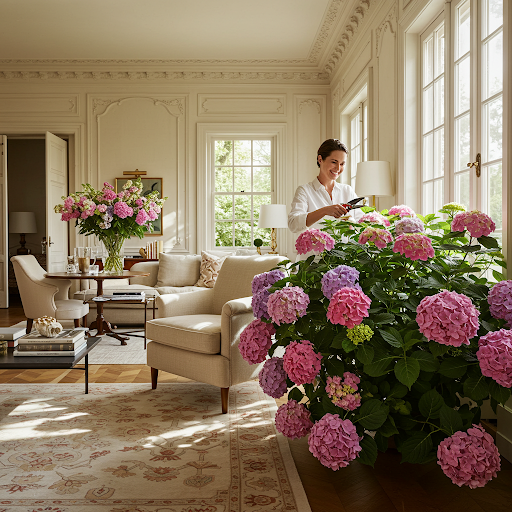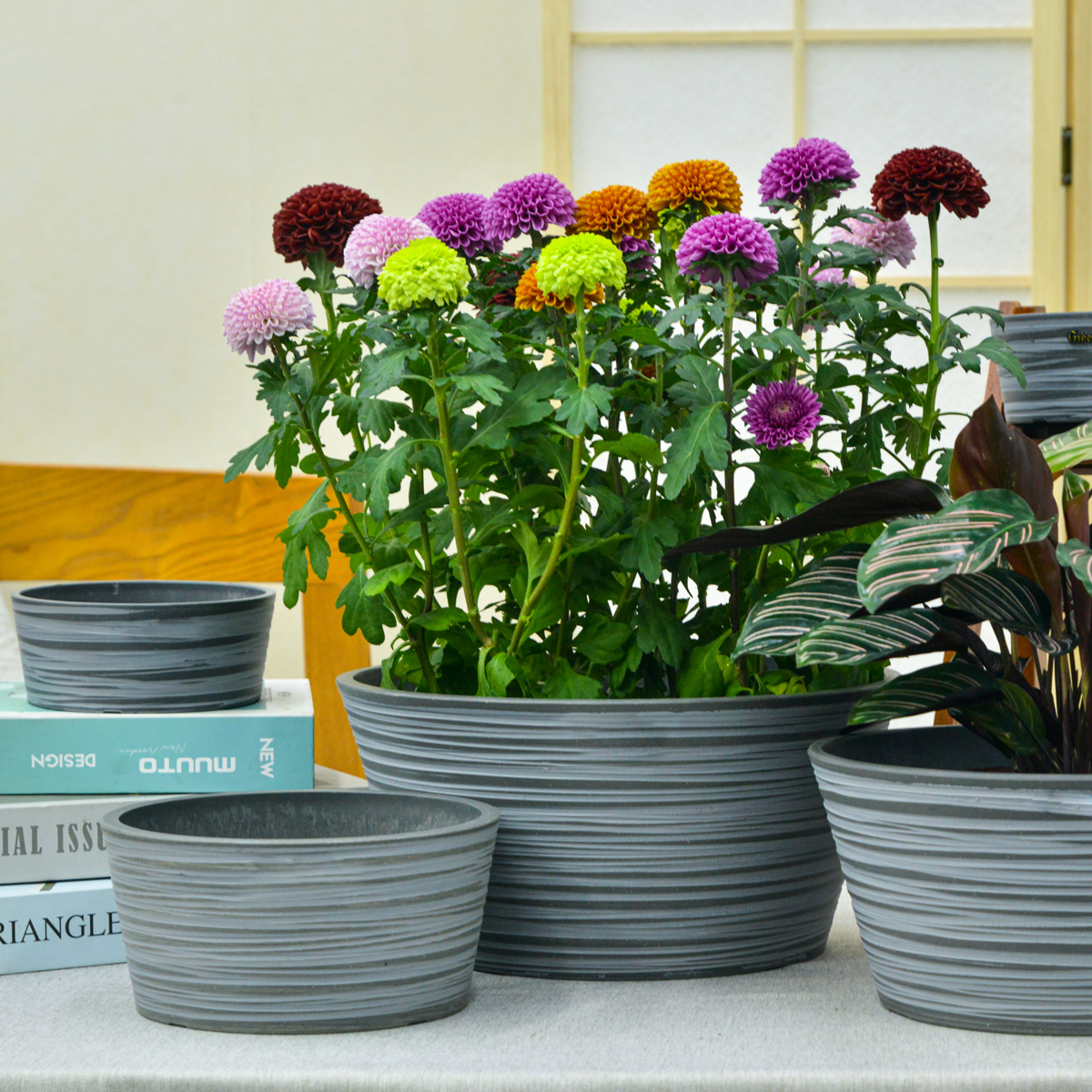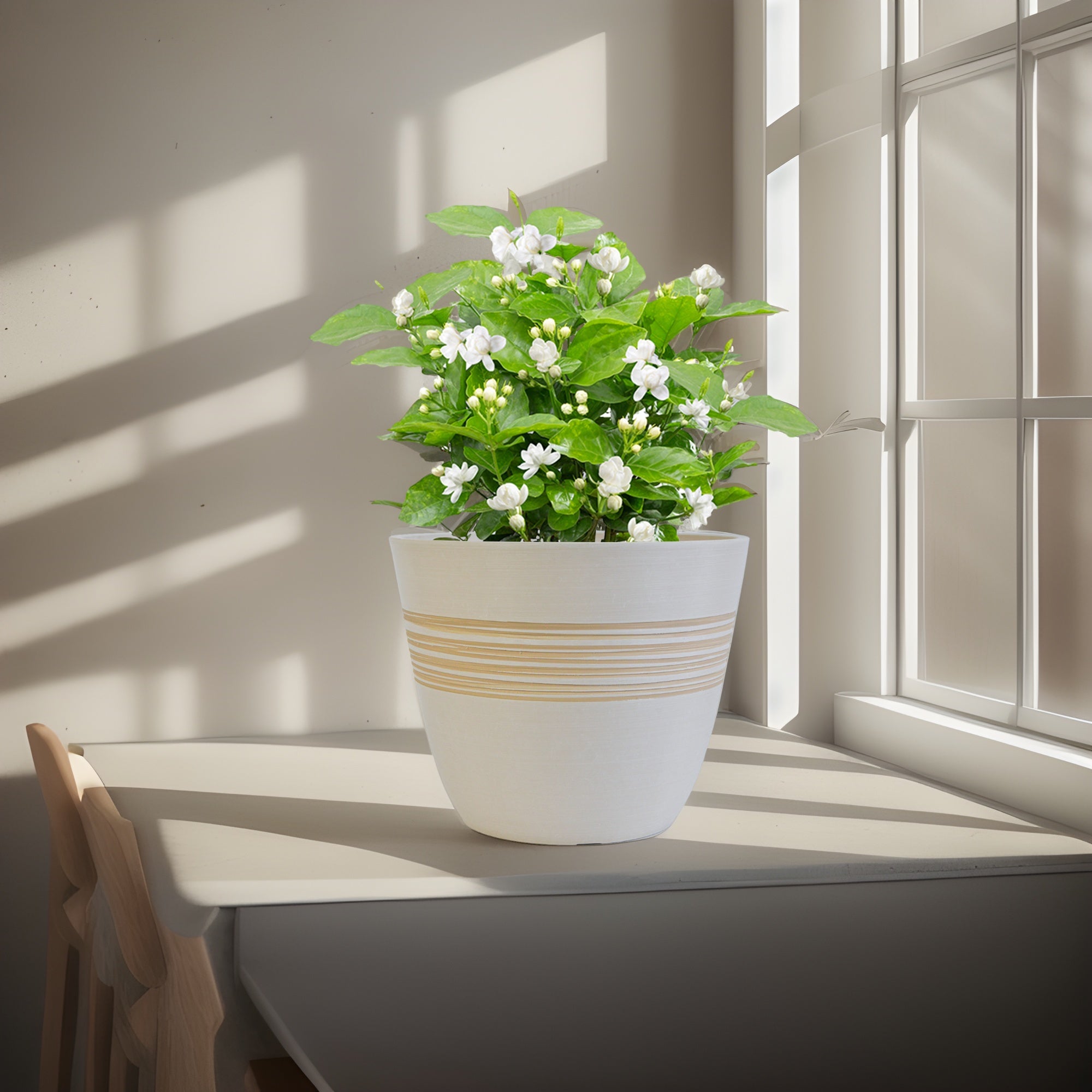Choosing and Nurturing Your New Hydrangea: A Guide for Beginners
Hydrangeas, especially the popular Bigleaf Hydrangea (Hydrangea macrophylla), are a favorite among gardeners for their stunning, colorful blooms. Starting with a healthy seedling is the first step towards enjoying these beauties in your own garden or patio. This guide will walk you through how to select the best hydrangea seedling and provide the initial care it needs to thrive.

Selecting a Healthy Hydrangea Seedling:
Whether you’re buying online or at a local garden center, focus on the following characteristics to ensure you’re choosing a strong and healthy plant:
- Healthy Roots: This is the most crucial factor. Look for images (if buying online) or ask to see the root ball (if buying in person). The roots should be well-developed, filling the soil ball without being excessively root-bound (tightly circling the pot). Healthy roots will appear off-white or tan. Avoid seedlings with brown or mushy roots, which indicate rot.
- Strong Stems: Examine the above-ground growth.
- Small Seedlings (under 4 inches/10 cm pot): Look for at least one or two new, healthy-looking shoots. They may not be very thick at this stage.
- 1-Gallon Size Seedlings: Aim for a plant with at least 3-5 strong, healthy stems. Avoid plants with many thin, weak, or damaged stems.
- Larger Seedlings: The overall plant should look healthy and well-proportioned, without significant signs of disease or damage.
Things to Avoid:
- “Old Wood” Bargains: Be wary of very old, seemingly woody plants offered at extremely low prices. These may be difficult to revive.
- Bare-Root or Minimal Soil Seedlings: Seedlings sold bare-root or with just a small amount of soil and no pot are often more challenging to establish, especially for beginners. Investing in a well-established potted seedling is generally worth the extra cost.
Post-Purchase Care: Acclimation (Hardening Off):
Once you bring your new hydrangea seedling home, it needs a period of adjustment to its new environment. This process is called acclimation or hardening off.
- Spring and Fall (Temperatures below 86°F/30°C): Place the hydrangea in a location with bright, indirect sunlight outdoors for one day. On the second day, it can usually tolerate full sun.
- Summer (High Temperatures): Provide bright, indirect sunlight outdoors for 2-3 days. If the leaves don’t wilt, gradually move it to a spot with partial shade for normal care.
- Signs of Stress: If the leaves continue to wilt in indirect light, it might indicate stress from shipping (if purchased online). Reduce watering and allow the plant to recover. Contact the seller if the issue is severe.
- Watering Upon Arrival: If the soil in the pot is dry, water thoroughly. If it’s already moist, avoid overwatering and wait for it to dry slightly before watering again.
- Winter: Hydrangeas are typically dormant in winter and don’t require an acclimation period.
Transplanting or Potting Up:
Most healthy seedlings you purchase will have roots that have filled their original container. After acclimation, it’s time to transplant it into a larger pot or directly into the ground.
Potting Up (Moving to a Larger Container):
- Remove from Original Pot: Gently remove the hydrangea from its current pot, keeping the root ball intact as much as possible. You can do this by pressing the sides of the pot and gently sliding the plant out or by inverting the pot while supporting the base of the plant.
- Loosen the Roots: Gently loosen the roots around the sides, top, and bottom of the root ball by about an inch (2 cm). This encourages the roots to spread out into the new soil. Use a small hand fork or your fingers to tease apart any tightly circling roots.
- Choose a New Pot: Select a pot that is about 4-6 inches (10-15 cm) larger in diameter than the original pot. While hydrangeas can grow quickly, avoid using a pot that is too large initially, as this can lead to overwatering issues.
- Prepare the Soil Mix: Hydrangeas prefer well-draining soil that is rich in organic matter. A good mix for hydrangeas in the US includes:
- 1 part potting soil
- 1 part peat moss or coco coir (for moisture retention and slight acidity)
- 1 part perlite (for drainage)
- You can also add some compost for nutrients.
- Planting: Place a layer of the soil mix at the bottom of the new pot. You can also incorporate a slow-release fertilizer formulated for shrubs or flowering plants at this stage, following the product instructions. Cover the fertilizer with a layer of soil mix to prevent direct contact with the roots. Position the hydrangea in the center of the new pot, ensuring the top of the root ball is level with the soil surface. Fill in the sides with the remaining soil mix, gently firming it around the plant.
- Water Thoroughly: Water the newly potted hydrangea thoroughly until water drains from the bottom of the pot.
After potting, place the hydrangea in a location with bright, indirect light for 3-5 days before gradually introducing it to more sunlight.

Planting in the Ground:
- Follow steps 1 and 2 for removing the plant from its pot and loosening the roots.
- Dig a hole that is approximately 16×16 inches (40×40 cm) wide and deep.
- Improve the native soil by mixing it with an equal amount of the potting mix you would use for containers.
- Incorporate some slow-release fertilizer or organic matter like compost or well-rotted manure into the bottom of the hole. Cover the fertilizer with a layer of the improved soil.
- Place the hydrangea in the hole, ensuring the top of the root ball is level with the surrounding soil. Fill the hole with the improved soil, gently firming it down.
- Water thoroughly.
Transplanting or planting in the ground is best done in the spring or fall when temperatures are mild. Avoid transplanting during the heat of summer.
Growing Environment:
- Light: Bigleaf hydrangeas thrive in morning sun and afternoon shade, especially in warmer climates in the US. In cooler regions, they can often tolerate full sun. Insufficient light can lead to weak stems and reduced flowering. Adjust the location based on your climate and preference for upright or slightly drooping flower heads (more sun generally leads to stronger stems).
- Ventilation: Good air circulation is essential for preventing fungal diseases. Outdoor locations with good airflow are ideal.
- Temperature: Bigleaf hydrangeas prefer temperatures between 60-77°F (15-25°C) during the growing season. They typically go dormant in winter, tolerating temperatures between 32-41°F (0-5°C). In colder regions of the US, protect the stems during harsh winters to ensure good blooming the following year.
Ongoing Care:
- Watering: For potted hydrangeas, water when the top inch or two of soil feels dry. While they need consistent moisture, overwatering can lead to root rot. In hot weather or intense sunlight, they may temporarily wilt (“false wilting”). Check the soil moisture before watering. For in-ground hydrangeas, water deeply once a week during dry periods for newly planted shrubs. Established shrubs generally need less frequent watering.
- Fertilizing:
- At Planting: Incorporate a slow-release balanced fertilizer into the soil when potting or planting.
- During Growing Season (Spring & Summer): You can supplement with a slow-release fertilizer formulated for flowering shrubs or use a water-soluble fertilizer with a higher phosphorus content every 2-4 weeks to encourage blooming. Follow product instructions for application rates. You can also use a foliar feed once a week. Avoid fertilizing during the heat of summer when the plant may be semi-dormant.
- Winter: In late fall or winter, you can amend the soil surface with organic matter like compost or well-rotted manure to provide nutrients for the following spring.
- Pruning: Pruning for Bigleaf Hydrangeas depends on whether they bloom on old wood (last year’s growth) or new wood (this year’s growth). Most Bigleaf Hydrangeas bloom on old wood.
- Deadheading: After the flowers fade, cut off the spent blooms just below the flower head.
- Pruning Old Wood Bloomers: Prune lightly immediately after flowering in the summer, removing any dead, damaged, or crossing1 branches. Avoid heavy pruning in the fall or winter, as this will remove the flower buds for the following year.
- Pruning New Wood Bloomers (e.g., Endless Summer): These varieties bloom on both old and new wood and can tolerate more pruning. You can prune them in late winter or early spring.
- Common Pests and Diseases: Keep an eye out for common hydrangea issues like spider mites, aphids, powdery mildew, and leaf spot. Treat infestations or diseases promptly with appropriate insecticidal soap, horticultural oil, or fungicides.
Changing Flower Color (for some varieties):
The flower color of some Bigleaf Hydrangeas can be influenced by the soil pH. Acidic soils (pH 5.0-5.5) tend to produce blue flowers, while alkaline soils (pH 6.0-6.5) result in pink flowers. Neutral soil may produce a mix of colors. You can amend the soil with aluminum sulfate to encourage blue flowers or lime to encourage pink flowers, following specific product instructions.
Propagation (Cuttings):
Hydrangeas are relatively easy to propagate from cuttings. Take semi-hardwood cuttings (stems with some brown bark at the base) in late spring or early summer. Remove the lower leaves, dip the cut end in rooting hormone, and plant in a well-draining potting mix (such as a 50/50 mix of perlite and vermiculite). Keep the cuttings moist in a bright, indirect location until they develop roots (usually within a month). Then, transplant them into small pots. Avoid propagating during the heat of summer.
Troubleshooting Common Issues:
- Wilting with Yellowing or Blackening Leaves: This often indicates overwatering and root rot. Ensure the pot has good drainage, allow the soil to dry out between waterings, and consider repotting into fresh, well-draining soil. If root rot is severe, you may need to trim away the damaged roots.
- Scorched Leaves: Brown, crispy spots on leaves are usually a sign of too much direct sunlight. Move the hydrangea to a location with more shade.
By following these guidelines, you’ll be well on your way to successfully selecting and nurturing beautiful hydrangea seedlings that will bring color and charm to your garden or home for years to come!
KC2-21G
By greenship|2024-08-13T06:19:08+00:00August 13, 2024|Categories: Hand-carving Series|
Modern Plant Pots with Drainage – Indoor & Outdoor Use (6″ Widths)
By greenship-seo|2025-04-10T06:29:43+00:00February 6, 2025|Categories: Hand-carving Series|Tags: Decorative Flower Pots|
11THD
By greenship|2024-08-13T02:52:20+00:00August 13, 2024|Categories: Hand-carving Series|
Modern Plant Pots丨Planter for Indoor Plants,8 inch or 10 inch Plant Pots with Drainage Hole,Decorative Flower Pots
By greenship-seo|2025-04-10T08:32:55+00:00January 7, 2025|Categories: Hand-carving Series|Tags: Decorative Flower Pots, Self-Watering Pots|
KC2-11V
By greenship|2024-08-16T05:39:50+00:00August 16, 2024|Categories: Hand-carving Series|
Planter for Indoor Outdoor Plants, Set of 2 Modern Decorative Plant Pots with Drainage Hole, Decorative Flower Pots
By greenship-seo|2025-04-10T07:46:01+00:00January 9, 2025|Categories: Hand-carving Series|Tags: Decorative Flower Pots, Self-Watering Pots|






